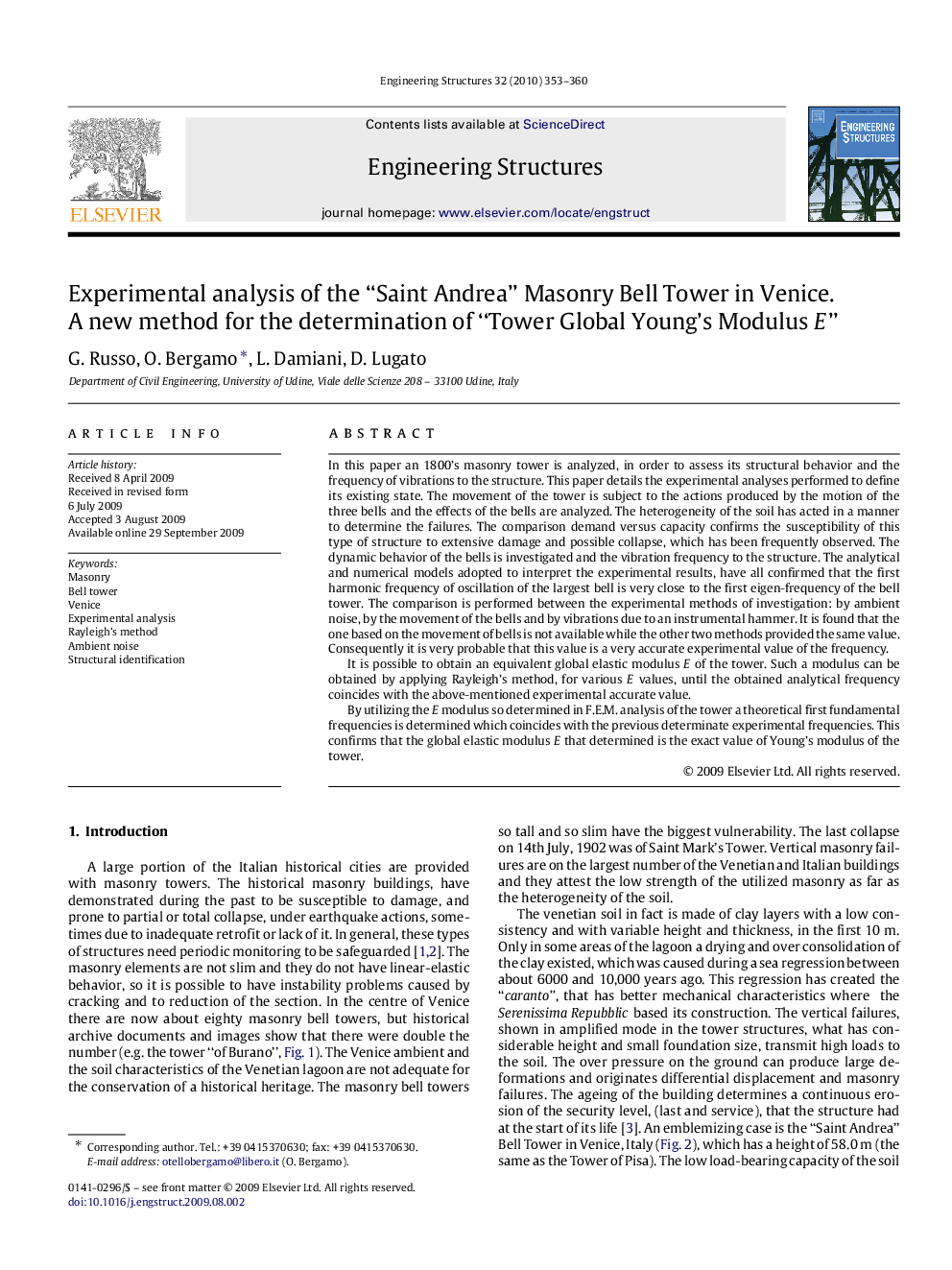| Article ID | Journal | Published Year | Pages | File Type |
|---|---|---|---|---|
| 268253 | Engineering Structures | 2010 | 8 Pages |
In this paper an 1800’s masonry tower is analyzed, in order to assess its structural behavior and the frequency of vibrations to the structure. This paper details the experimental analyses performed to define its existing state. The movement of the tower is subject to the actions produced by the motion of the three bells and the effects of the bells are analyzed. The heterogeneity of the soil has acted in a manner to determine the failures. The comparison demand versus capacity confirms the susceptibility of this type of structure to extensive damage and possible collapse, which has been frequently observed. The dynamic behavior of the bells is investigated and the vibration frequency to the structure. The analytical and numerical models adopted to interpret the experimental results, have all confirmed that the first harmonic frequency of oscillation of the largest bell is very close to the first eigen-frequency of the bell tower. The comparison is performed between the experimental methods of investigation: by ambient noise, by the movement of the bells and by vibrations due to an instrumental hammer. It is found that the one based on the movement of bells is not available while the other two methods provided the same value. Consequently it is very probable that this value is a very accurate experimental value of the frequency.It is possible to obtain an equivalent global elastic modulus EE of the tower. Such a modulus can be obtained by applying Rayleigh’s method, for various EE values, until the obtained analytical frequency coincides with the above-mentioned experimental accurate value.By utilizing the EE modulus so determined in F.E.M. analysis of the tower a theoretical first fundamental frequencies is determined which coincides with the previous determinate experimental frequencies. This confirms that the global elastic modulus EE that determined is the exact value of Young’s modulus of the tower.
